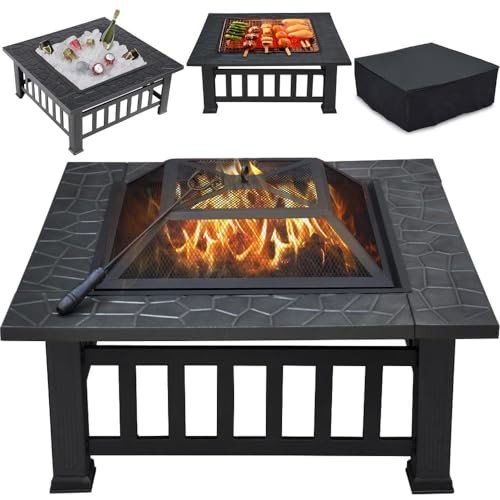16 Must-Follow Pages On Facebook For Fireplace-Related Businesses
The Charm and Functionality of Fireplaces: A Comprehensive Guide
Fireplaces have actually long been a central feature in homes, symbolizing heat, friendship, and comfort. Fireplace UK come in different styles, materials, and fuel types, dealing with the choices and requirements of diverse homeowners. This article looks into the complex world of fireplaces, exploring their history, types, installation factors to consider, and maintenance suggestions, while supplying FAQs to resolve typical inquiries.
A Brief History of Fireplaces
Historically, fireplaces served as the foundation for cooking and heating homes. In ancient times, an open hearth was frequently put in the center of a home. Over Wood Burning Fireplaces UK , architectural developments helped with the development of more advanced styles, evolving from basic stone structures to elaborate mantels that command modern living areas.
Secret Historical Milestones:
- Ancient Times: Open fires in caverns and primitive huts for heat and cooking.
- Middle Ages: Large, frequently centralized chimney structures in excellent halls of castles.
- Renaissance: Decorative mantels and designs gain appeal, with the fireplace becoming a sign of wealth and status.
- Industrial Revolution: Advancements in products and producing enable a broader variety of fireplace styles.
- Modern Era: Gas and electric fireplaces end up being commonplace, enabling increased benefit and security.
Types of Fireplaces
Today, various types of fireplaces are available, each with its distinct qualities. Below is a breakdown of the most common types:
Fireplace Type
Description
Pros
Cons
Wood-Burning
Traditional fireplaces fueled by wood.
Genuine experience, heat output.
Labor-intensive, requires proper venting/maintenance.
Gas
Fireplaces that utilize gas or gas.
Easy to use and keep.
Less atmosphere compared to wood.
Electric
Uses electrical power to create heat and flames.
Safe, no venting required.
Restricted heat output, greater energy costs.
Bioethanol
Utilizes bioethanol fuel, producing tidy flames.
Eco-friendly, portable.
Needs routine refueling.
Pellet
Utilizes compressed wood pellets as fuel.
Clean burning, sustainable.
Needs power for operation.
Extra Considerations
When selecting a fireplace, it is necessary to think about factors such as:
- Fuel Availability: Consider what fuels are readily available in your location.
- Area and Aesthetics: The size of your living area and your style choices ought to direct your choice.
- Building Regulations: Always speak with local policies to ensure compliance and safety.
Setup Considerations
Setting up a fireplace involves more than simply putting a structure in your house. Thorough preparation, professional input, and adherence to security codes are paramount. Here are some important actions:
- Planning: Consider the size and kind of fireplace, where it will be positioned, and its desired usage.
- Consultation: Hire a certified professional to examine your home and make sure appropriate installation.
- Permits: Obtain any necessary structure authorizations from local authorities.
- Materials: Select appropriate products for the fireplace and surrounding location. Guarantee they are fireproof and designed for your fuel type.
Upkeep Tips for Fireplaces
Regular upkeep ensures your fireplace runs safely and efficiently. Here are important upkeep pointers classified by fireplace type:
Wood-Burning Fireplaces
- Chimney Cleaning: Have your chimney cleaned every year to prevent creosote accumulation.
- Check for Damage: Check for cracks and damage to the firebox and chimney structure.
- Firewood Storage: Store firewood far from the home to avoid pest invasions.
Gas Fireplaces
- Log Inspection: Regularly analyze ceramic logs for fractures and change if essential.
- Vent Cleaning: Ensure that vents are devoid of obstructions.
- Pilot Light Check: Test pilot lights and ignition systems routinely.
Electric Fireplaces
- Cable Inspection: Frequently examine electrical cables for tearing or wear.
- Tidy Surfaces: Wipe down surfaces routinely to get rid of dust and debris.
- Smoke alarm: Ensure smoke alarm in the area are functional.
Bioethanol and Pellet Fireplaces
- Fuel Storage: Store fuels in a cool, dry place away from direct sunshine.
- Regular Refueling: Monitor fuel levels and refuel as required.
- Ventilation: Ensure correct ventilation when utilizing these fireplaces.
Frequently asked questions About Fireplaces
Q1: Do I need a permit to set up a fireplace?
Yes, many municipalities require authorizations for fireplace installations to make sure safety and compliance with local building codes.
Q2: How frequently should I clean my chimney?
It is suggested to have your chimney cleaned up a minimum of when a year, especially if you use your fireplace frequently.
Q3: Can I transform a wood-burning fireplace to gas?
Yes, many house owners convert wood-burning fireplaces to gas for benefit, but consulting a professional is suggested to ensure an appropriate conversion.
Q4: Do electric fireplaces produce heat?
Yes, electric fireplaces can produce heat; however, their primary function is often for ambiance, making them an appropriate choice for those who desire a fire appearance without comprehensive heating.
Q5: Are bioethanol fireplaces safe?
Bioethanol fireplaces are normally safe when utilized properly; however, they require appropriate ventilation, and users must follow all manufacturer standards.
Fireplaces not just include visual appeal to homes but likewise offer useful heating services. With numerous types, styles, and maintenance requirements, homeowners can make informed choices that best suit their needs and way of lives. Whether going with the charm of a wood-burning fireplace or the benefit of a gas model, a fireplace can substantially boost a living space's comfort and environment. As the hearth remains a centerpiece in homes, it continues to promote warmth, discussion, and connections amongst household and buddies.
